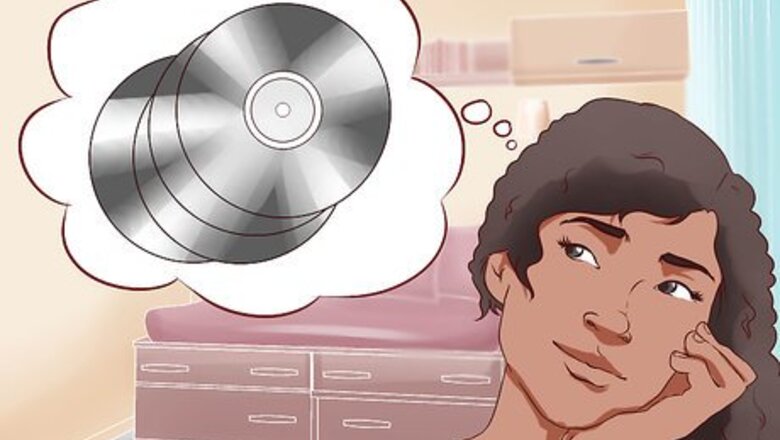
views
Writing the Album
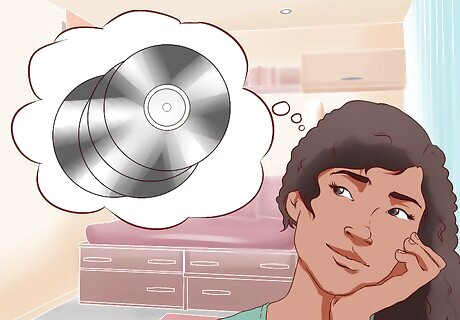
Develop a theme or concept for your album. Your approach to an album theme can be as loose or elaborate as you like, but some kind of theme is necessary to make your album cohesive. It can be as simple as creating a lyrical theme that fuses the songs together, or you can go all out with a deep-rooted concept album that tells a story through song. For example, a loose theme could focus on a specific emotion, one of the four elements, a particular event that affected you or your own social commentary. To get an idea of how concept albums work, take a look at some of the following: The Wall by Pink Floyd, Pet Sounds by Beach Boys, and Sgt. Pepper's Lonely Hearts Club Band by The Beatles. Before you start writing songs, spend some time reflecting. Keep a journal and write down your thoughts and ideas as they come to you.

Build on songs that you’ve already written. Chances are, you have songs written that you haven’t done anything with yet. Look closely at those songs – are there any connecting lyrical or melodic themes? Are they strong enough to build your album on? At the very least, these songs might inspire new ideas, or jumpstart a concept you already have in mind. Consider already-written material for your album. Work on building a repertoire of solid songs that you don’t necessarily have a plan for yet.

Spend a significant amount of time crafting new songs. During the writing phase, don’t aim for perfection or fully realized songs. You can perfect the songs later. For now, explore ideas and make room for inspiration to strike. As you work on the songs, also work toward developing your own unique sound. Inspiration can come at any time, so be prepared. Carry a pen and notebook with you everywhere. Use a voice recorder app on your phone to capture lyric or melody ideas on the fly. If you don't play an instrument, search online for instrumentals you can lease or purchase from the creator. If you are co-writing songs with someone else, agree on how to split the music rights during the writing process. Typically, whoever writes the music gets 50%, and whoever writes the melody and lyrics gets 50%. Don’t try to force the songs. If you get stuck on one, put that song away and start work on another one. You can come back to it later with fresh eyes and ears. Taylor Swift Taylor Swift, Singer & Businesswoman You can find inspiration everywhere. "Sometimes I write about my own life. And sometimes I write about situations I see my friends going through. Sometimes I write about a scene I saw in a movie. I take inspiration from all different places."

Practice frequently. Organize specific times for practicing and stick to that schedule as closely as you can. Consistent practicing will help you hone your craft. You’ll also get more comfortable with your material and your new songs will fully develop. Take note of any changes or variations that happen spontaneously while you’re practicing. Think about why these variations might be happening. Do you need to rehearse more to work that kink out, or should that change be incorporated into the song? Don’t be afraid to change your songs based on what comes out naturally while you’re practicing. Allow them to develop organically.

Book gigs and perform in front of crowds as often as possible. Performing will give you the chance to perfect your songs and test your new material out on an audience. Pay attention to their reactions and get feedback from trustworthy people in the crowd. Use gigs as opportunities to improve and refine your songs.

Collaborate with your bandmates. If you are the front person or the main songwriter of a band, it can be difficult to relinquish full control. However, you have to give your bandmates room to interpret your vision while still putting their unique spin on the sound. Allow room for their creative juices to flow. Respect the suggestions and input of your bandmates. The songs will be better for it.
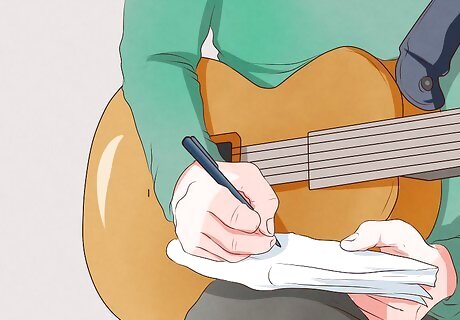
Write more songs than you’ll need for a single record. After honing in on what you envision as the thematic heart of your album, explore your concept more deeply by writing even more songs. In general, most completed albums range from 8 to 12 tracks, so try to write around 20 songs. If 20 seems like too many, just aim to write as many songs as you can. Having an excess of material will allow you to literally craft your album by going through a process of elimination once you’re in the final stages.
Finalizing the Songs

Choose the best tracks for the record. As you narrow down the final tracks, think of the album as sculpture. Carve away the songs that don't fit your concept. Don’t focus on choosing what you perceive to be the obvious “singles” – include a wide range of songs. Contrast is important to maintain a listener’s attention. Produce only the best of your music. Choose the songs that truly showcase your musical talent.

Arrange the track listing with emphasis on the first track. Track sequencing has always been important, but in today’s digital music market, it’s even more so. Research has shown that the earlier a track appears on a record, the more likely a consumer is to listen to it. The first song in particular is crucial, since it sets the tone for the entire piece. If you’re working with a very particular theme or concept, create a narrative framework. It might help to imagine that you’re composing the music for a film. If you aren’t trying to tell a literal story, think more in terms of grouping songs together in chunks that relate to one another in a way that makes sense to you. Even if your concept/theme is more on the ambiguous side, you still want the album to be as cohesive as possible.

Give the album a title. At this point you probably already have a working title in mind, but it’s best to wait until the entire thing is compiled before committing to one. Choose a title that conveys the theme/concept you’ve been working toward. Go through your lyrics and see if anything jumps out at you as being title material. Bands often use the title of one of the songs as the album title. If you decide to go this route, choose the song that best exemplifies the theme or mood of your album. Another popular choice is to self-title the record, especially if it’s a debut album. To self-title means to make your band’s name the record title. Consider this if you feel that the album’s themes encapsulate what your band is fundamentally all about.

Rehearse the songs to prepare for recording in the studio. Studios usually charge by the hour and they are not cheap. Because of this, make sure that you’ve rehearsed the studio versions of your new songs until you have them down cold. Do as much pre-production on the album as you possibly can before hitting the studio. Figure out the BPM of each song before you go into the studio. This will help you avoid wasting valuable studio time figuring out tempos. If you have fellow band members, make sure everyone has rehearsed. Ask everyone to tune and prep their instruments before going into the studio. Consider recording a demo for each song you want to produce in the studio. You'll be able to lay down the vocal tracks and work out a lot of the details of the song in advance. Once you're in the studio, you'll be able to make the most of your time by focusing mostly on the lead vocal. If you are self-recording your record at home, this is still a good rule of thumb. Before you sit down to record a single note, do all of the pre-production for your record.
Recording the Album
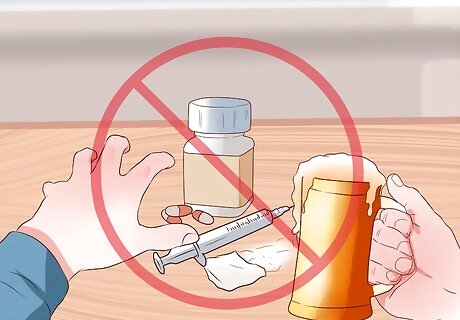
Remove all distractions from the studio. Everyone should put away their cell phones and come into the studio ready to focus on recording the songs. Make sure the room is comfortable enough to spend large chunks of time in. Limit (or even prohibit) visits from friends, family and significant others. Remember to take frequent breaks to avoid over-exerting yourself. You want to keep your mind sharp. Step outside for a few minutes every hour or so for a breather. Don't have or do drugs and/or drink alcohol in the studio. You'll run the risk of wasting studio time and negatively affecting your ability to perform.

Create a realistic recording schedule and stick to it. It’s good to go into the studio with high expectations, but don’t hinder yourself by establishing goals that don’t make sense. Even the simplest of songs should take you about 1-2 hours to record, not counting set up time. Expect overdubs to take about 1 hour per song. Book your studio hours based on the above estimations. You may want to even give yourself a little extra time on top of that. It’s better to work with a slight excess of time rather than not enough.Otherwise, you’ll stress yourself out by rushing to finish, and may end up with recordings that you aren’t proud of. Recording can be taxing on your voice, so don't plan to sing 10 songs in one day. Two songs a day is a good starting point.

Use the best studio equipment you can afford. Get a list of what gear the studio has to offer before you go in and have a discussion with the engineer about what sound you are going for. The most important aspect is tracking the drums, since they are the hardest to get right in a recording. If you are short on cash, book studio time just for drum tracking. The rest can be done at a home studio with software like Pro Tools or Logic, especially if your band already owns decent gear and you have some quality microphones. To record good vocals, all you really need is a quality mic and an isolation booth. Talk to the studio to find out if an engineer is included in the cost of your studio time. If not, consider paying extra for one—having someone who can mix the music while you're performing is worth the cost! You'll also need to have each song mastered after it's recorded. Use the talents of your friends whenever possible. As a musician, you probably know people who have engineering talents and home studios.

Avoid overthinking every detail. You need to listen to the recordings with a critical ear, but try to step back and be as objective as possible. It is not uncommon for musicians to over analyze the smallest of details in the studio and then tweak their recordings until they sound completely sterile. You want the songs to sound good, but you also want to preserve their original creativity. Overuse of studio equipment has a way of sanitizing recordings to a fault. It might help to bring some trusted friends in, after the majority of the recording is completed, to get fresh ears on the recordings.
Designing the Artwork

Make sure the artwork represents what the album is about. Cover art is often the final piece of the puzzle – the visual representation of what the album sounds like. The artwork can pull together your theme and add to the cohesiveness of the songs. It’s also crucial because it’s the first interaction most potential buyers will have with the album. Create or choose powerful images that represent your songs. Keep your album’s theme and overall mood in mind. You want the artwork to be eye-catching, but it should also epitomize your album’s theme.
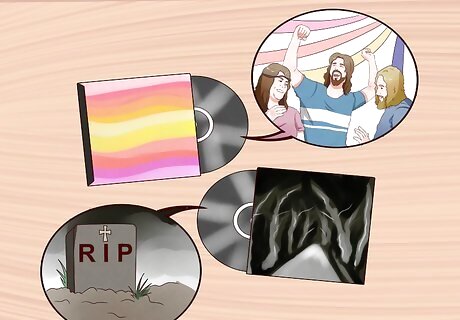
Put some thought into the color choices. The colors used in the artwork are just as important as the images themselves, so develop a color theme that reflects the album’s emotions. It wouldn’t make sense to record a bleak record about the death of a loved one and then put a pink and yellow cover on it. Conversely, a jubilant-sounding album shouldn’t have artwork that is mostly black or gray. If you're not a visual artist, consider hiring one on a gig site like Fiverr. Inspect the artwork of some of your favorite albums for inspiration. Think about how the color choices on those album covers relate to the emotion of the records.

Be consistent once you’ve decided on a particular vibe and treatment. Your chosen theme and album vibe should have continuity across the board. This includes even the font choices and your band’s logo (if you have one). The idea is to present a complete package – a fully realized piece of art. The more uniform your complete album package is, the easier it is for people to remember. Keep consistency in mind even when it comes to your band’s merchandise, website, etc. For example, a somber album shouldn’t be paired with a pink band t-shirt.

Create your own artwork whenever possible. When it comes to your album, you are the expert. You know it inside and out. If you aren’t artistic in this way, try to work up a loose initial design in Photoshop or on paper before handing it off to more capable hands. At the very least, have a solid idea of what you are trying to achieve with the artwork before having someone else design it. Be protective of your vision, but also leave a little room for the artist to be creative. Make sure the final design has a high quality digital file that goes with it. When the artwork goes to print, the highest resolution possible is needed to ensure the final product looks solid and professional.



















Comments
0 comment